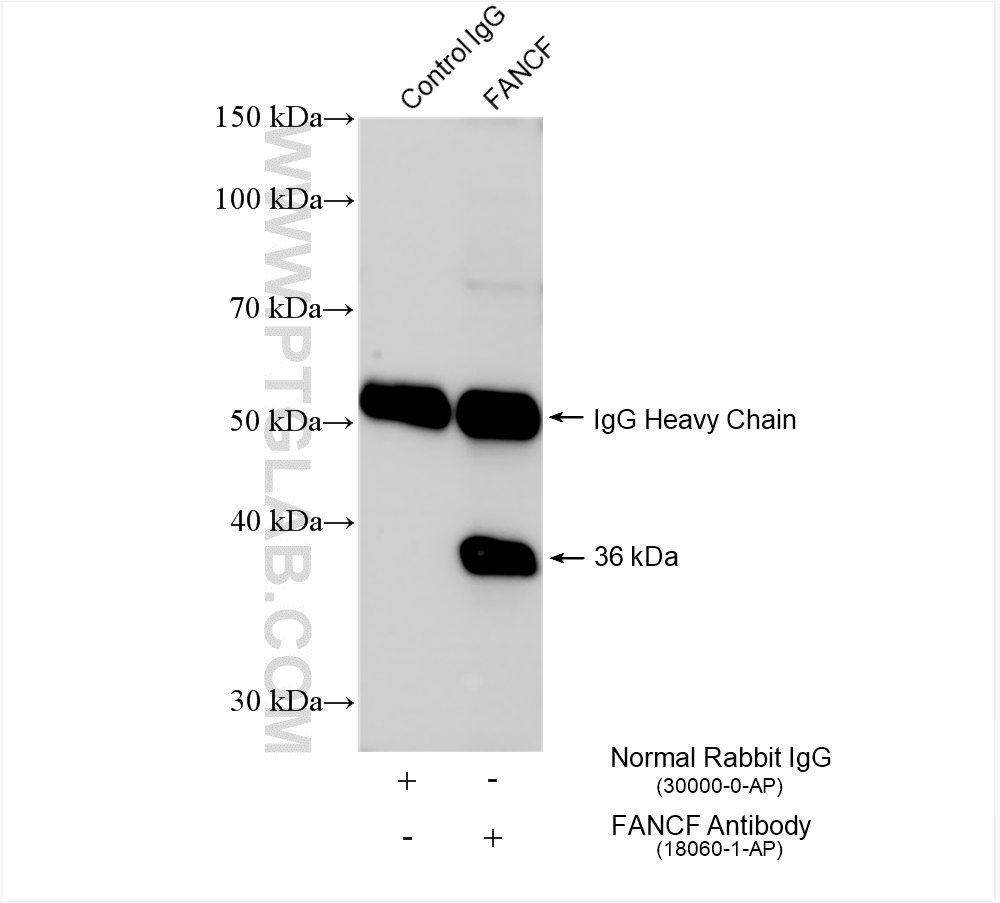FANCF Polyclonal antibody
FANCF Polyclonal Antibody for IP, ELISA
Host / Isotype
Rabbit / IgG
Reactivity
human
Applications
IP, ELISA
Conjugate
Unconjugated
验证数据展示
经过测试的应用
| Positive IP detected in | HeLa cells |
推荐稀释比
| Application | Dilution |
|---|---|
| Immunoprecipitation (IP) | IP : 0.5-4.0 ug for 1.0-3.0 mg of total protein lysate |
| It is recommended that this reagent should be titrated in each testing system to obtain optimal results. | |
| Sample-dependent, Check data in validation data gallery. | |
产品信息
18060-1-AP targets FANCF in IP, ELISA applications and shows reactivity with human samples.
| Tested Applications | IP, ELISA Application Description |
| Tested Reactivity | human |
| Immunogen | FANCF fusion protein Ag12649 种属同源性预测 |
| Host / Isotype | Rabbit / IgG |
| Class | Polyclonal |
| Type | Antibody |
| Full Name | Fanconi anemia, complementation group F |
| Synonyms | FAF, FANCF, Fanconi anemia group F protein, Protein FACF |
| Calculated Molecular Weight | 374 aa, 42 kDa |
| Observed Molecular Weight | 36 kDa |
| GenBank Accession Number | BC093867 |
| Gene Symbol | FANCF |
| Gene ID (NCBI) | 2188 |
| RRID | AB_3669289 |
| Conjugate | Unconjugated |
| Form | Liquid |
| Purification Method | Antigen affinity purification |
| UNIPROT ID | Q9NPI8 |
| Storage Buffer | PBS with 0.02% sodium azide and 50% glycerol pH 7.3. |
| Storage Conditions | Store at -20°C. Stable for one year after shipment. Aliquoting is unnecessary for -20oC storage. |
背景介绍
The Fanconi anemia complement group F (FANCF) is located on chromosome 11p15, a region enriched in cancer-associated genes. FANCF is known to be involved in DNA repair, and the overexpression of FANCF protein leads to cell proliferation and ultimately to cancer. The epigenetic silencing of FANCF has been reported in several different tumors such as ovaries, bladder, cervical, leukemic, testicular, lung, and oral tumors (PMID: 21915857, 32915143).
实验方案
| Product Specific Protocols | |
|---|---|
| IP protocol for FANCF antibody 18060-1-AP | Download protocol |
| Standard Protocols | |
|---|---|
| Click here to view our Standard Protocols |
